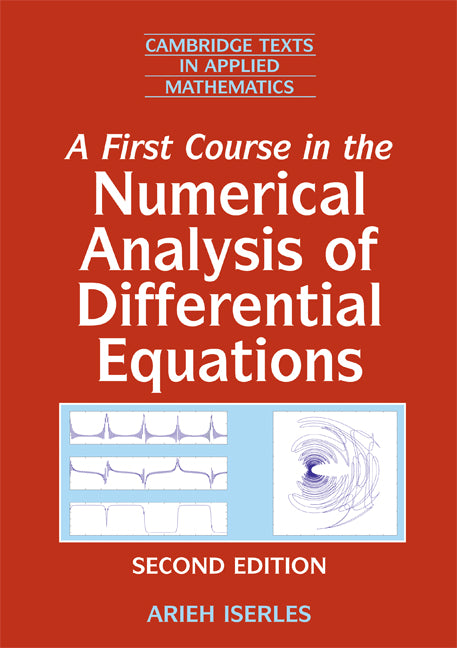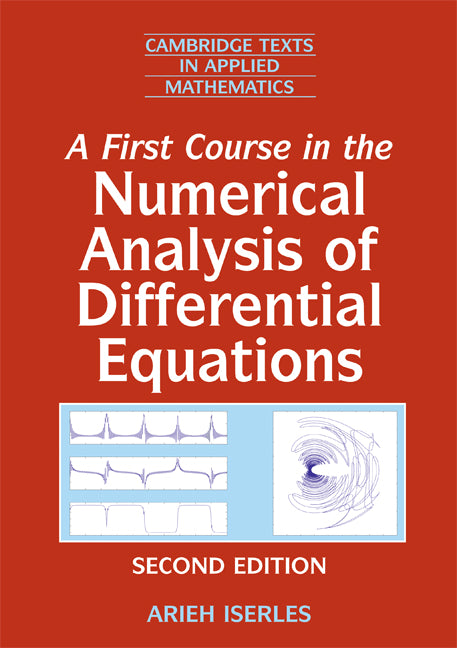Freshly Printed - allow 8 days lead
Couldn't load pickup availability
A First Course in the Numerical Analysis of Differential Equations
An extensively updated second edition including new chapters on emerging subject areas: geometric numerical integration, spectral methods and conjugate gradients.
Arieh Iserles (Author)
9780521734905, Cambridge University Press
Paperback, published 27 November 2008
480 pages, 4 b/w illus. 163 exercises
24.4 x 17.5 x 2.5 cm, 0.88 kg
'The present book can, because of the extension even more than the first edition, be highly recommended for readers from all fields, including students and engineers.' Zentralblatt MATH
Numerical analysis presents different faces to the world. For mathematicians it is a bona fide mathematical theory with an applicable flavour. For scientists and engineers it is a practical, applied subject, part of the standard repertoire of modelling techniques. For computer scientists it is a theory on the interplay of computer architecture and algorithms for real-number calculations. The tension between these standpoints is the driving force of this book, which presents a rigorous account of the fundamentals of numerical analysis of both ordinary and partial differential equations. The exposition maintains a balance between theoretical, algorithmic and applied aspects. This second edition has been extensively updated, and includes new chapters on emerging subject areas: geometric numerical integration, spectral methods and conjugate gradients. Other topics covered include multistep and Runge-Kutta methods; finite difference and finite elements techniques for the Poisson equation; and a variety of algorithms to solve large, sparse algebraic systems.
Preface to the first edition
Preface to the second edition
Flowchart of contents
Part I. Ordinary Differential Equations: 1. Euler's method and beyond
2. Multistep methods
3. Runge–Kutta methods
4. Stiff equations
5. Geometric numerical integration
6. Error control
7. Nonlinear algebraic systems
Part II. The Poisson Equation: 8. Finite difference schemes
9. The finite element method
10. Spectral methods
11. Gaussian elimination for sparse linear equations
12. Classical iterative methods for sparse linear equations
13. Multigrid techniques
14. Conjugate gradients
15. Fast Poisson solvers
Part III. Partial Differential Equations of evolution: 16. The diffusion equation
17. Hyperbolic equations
Appendix. Bluffer's guide to useful mathematics: A.1. Linear algebra
A.2. Analysis
Bibliography
Index.
Subject Areas: Numerical analysis [PBKS]


